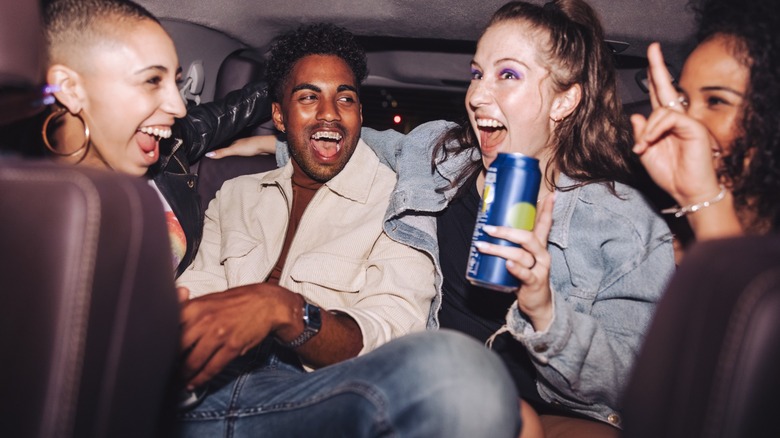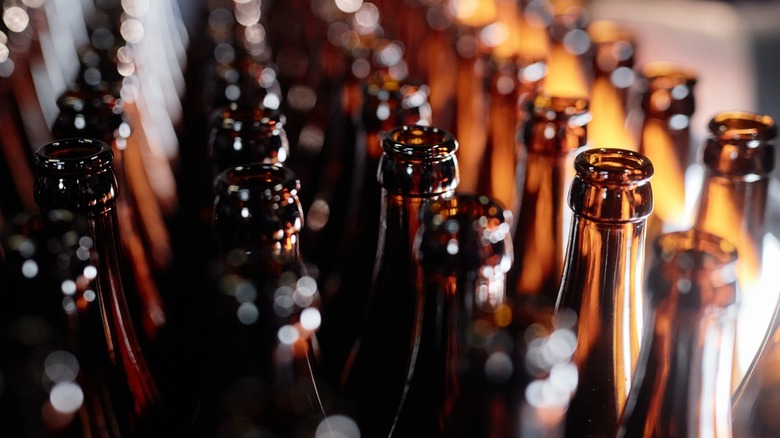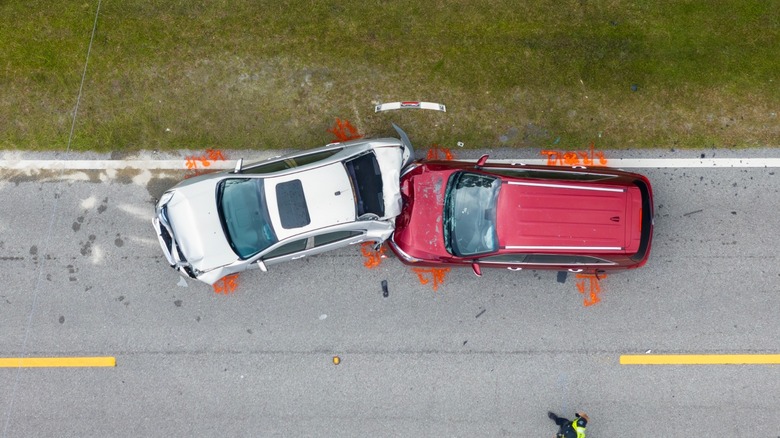Is It Illegal To Drink In The Car As A Passenger While Someone Else Drives?
There are many obscure and strange driving laws across the United States, but one law that's neither of those things is the one that criminalizes drinking while driving or driving while under the influence of alcohol. Washington, D.C. and all 50 states make it a crime to operate a motor vehicle if you have a blood alcohol content (BAC) of .08 or higher (except for Utah, which restricts the limit to 0.05). In most states, it's even illegal to drive riding mowers while drunk. It's hard to argue against these laws, as — according to the National Highway Traffic Safety Administration (NHTSA) — there's about one drunk driving-related fatality in the U.S. every 42 minutes. In 2023, the total of deaths in the country caused by drunk driving was 12,429 and all were preventable if drivers had responsibly followed the law.
But what about passengers? Since they're not in control of the vehicle, one could argue that there's no reason they can't drink as much as they want. However, if an open container of alcohol is within arm's reach of a driver and their passengers are having a good time drinking it, it makes it more likely the driver will be tempted to drink themselves. Because of this, it's illegal for passengers to drink while someone else is driving — in 38 states and Washington, D.C., at least. That means there are large parts of the country where it's not a crime, which is partly due to why many of these laws were passed in the first place.
Open container laws are regulated by the States — not the federal government
In 1933, the United States passed the 21st amendment to the Constitution to repeal Prohibition, once again making it legal to produce, sell, and imbibe alcohol across the country. The amendment also gives states more power to regulate alcoholic beverages within their own borders, rather than place it under federal jurisdiction. Because of this, drunk driving laws are passed by state governments and not by Congress, which is why laws involving alcohol can vary from state to state or even county to county.
However, the federal government pushed stricter regulation in 1998 by incentivizing states to pass open container laws that ban passengers from drinking inside vehicles. Congress accomplished this by tying federal subsidies for highways to passing legislation that prohibits drinking all types of alcohol in motor vehicles, including the entire passenger area, for all vehicle occupants. As stipulated in the Transportation Equity Act for the 21st Century (TEA-21), if states do not pass and enforce these laws, they will have to pay for highway construction and maintenance out of their own budget. States will usually take any federal subsidies they can get, so it's a very strong incentive and why 38 states comply.
These laws also require states to fund enforcement of the open container statutes and related training for officers. Because of the way these laws are often drafted, if something is already considered a motor vehicle by the State, it falls under these restrictions, which is why it's possible to get a DUI while riding on an electric scooter. The laws required by TEA-21, however, do not apply to bus passengers or in the living quarters of mobile homes.
Are stricter open container laws effective?
As of October 2022, 38 states and Washington, D.C. have passed laws complying with TEA-21. That means there are 12 states that don't have these laws and where passengers can legally drink in vehicles, even if the driver cannot. These states instead choose the alternative that's outlined in the federal law — they still receive funds for infrastructure, but a portion of them must instead be redirected to "alcohol-impaired driving or hazard elimination activities."
For example, Connecticut does not outlaw passengers from drinking in motor vehicles. As a result, 2.5% of the state's federal highway repair subsidies are required to be used on these alternative hazard elimination activities rather than for highway repair. Connecticut can either choose to make up that money from their own budget or just spend less on road maintenance (and then likely have shoddier highways). Because Connecticut receives $521 million from the two largest federal programs, it has already diverted at least $164 million of that money since 2001, when enforcement of TEA-21 began.
The reasons likely vary from state to state why some governments don't want to pass stricter open container laws. Some may not see the need to spend any money or energy on additional enforcement. One argument against open container laws is that it makes it easier for law enforcement to justify unnecessary traffic stops, which often disproportionately target specific races and working-class drivers and passengers. But, the laws may save lives by reducing the number of potential drunk drivers on the road. The NHTSA says that "the proportion of alcohol-involved fatal crashes was higher in States with no open container laws than in States with laws" and that "survey data in both law and no-law States show strong public support for open container laws."


